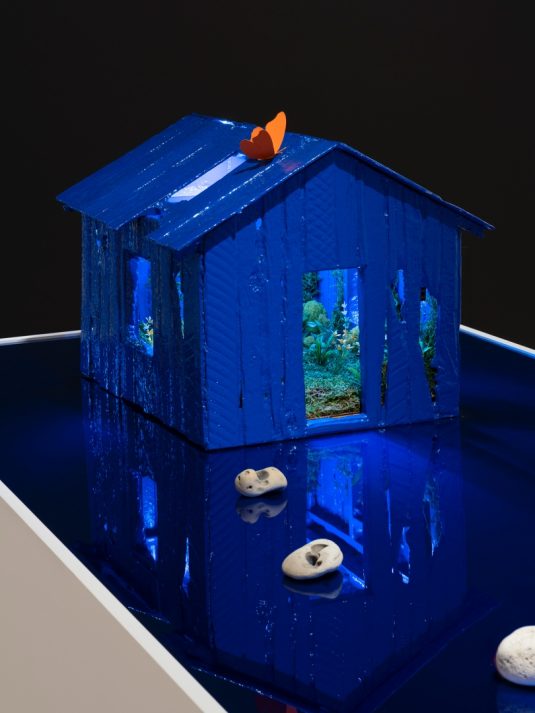
Spirit House
Henry Art Gallery, Seattle, WA - To Jan 11, 2026
In contrast to the Western concept of history as fixed in time, Asian cultures have rich spiritual traditions in which ancestors are a vivid presence in the lives of their descendants. Knowledge and belief are gained through experience, but are also inherited, intuited, and even transmitted psychically or subconsciously.
The 34 artists in Spirit House trace their roots to 13 Asian countries. Over half were born in Asia, but only three still live there full time. Most were educated in the West and reside in North America. They employ a variety of media: photography, painting, sculpture, ceramics, glass, fiber and video. While their work is contemporary, they maintain strong ties to the places that they and their families came from. Their work is representational, depicting places, people and objects. But it also transcends time and distance, embodies memories and connects generations. The past inhabits the present.
The show’s overarching concept is inspired by spirit houses—small structures found throughout Thailand to shelter the spirits of ancestors who act as guardians of the living. “Spirit Houses” is also one of five thematic areas around which the show is organized. They may be reinterpretations of the traditional houses or visualizations of places recalled by ancestors. Greg Ito’s The Weight of Your Shadow (2023) recreates the barracks where his Japanese American grandparents were imprisoned during World War II, now occupied by family heirlooms and lush plant life: memories and hopes for a better future.
The other four thematic areas include “Shrines,” places where rituals are practiced, like the altars found in many Asian homes. “Hauntings” are historical forces and events, especially traumas, that continue to shape the lives of the living. “Ghosts” can be family secrets or inherited memories of someone known only through photographs and stories. “Dimensions” are alternate realities where the past and the present may be reconciled.
This show is described as “work that challenges the boundary between life and death,” but it is more about memory. The artists have visualized and materialized the stories and beliefs that have been passed down through their families and shared across diasporas.

